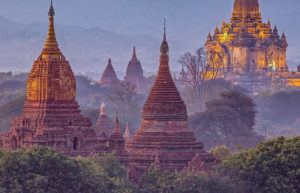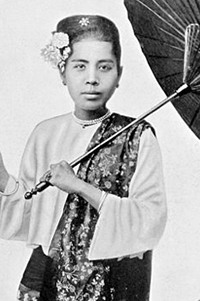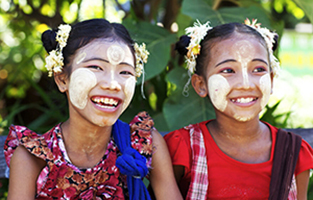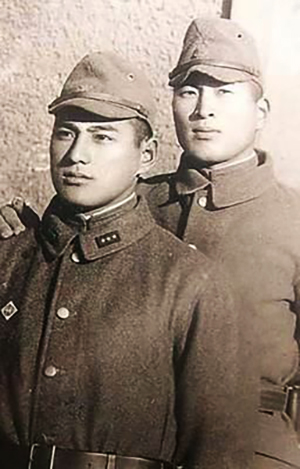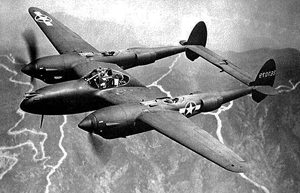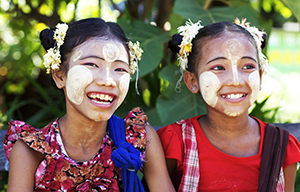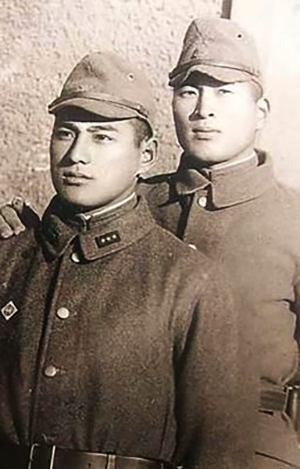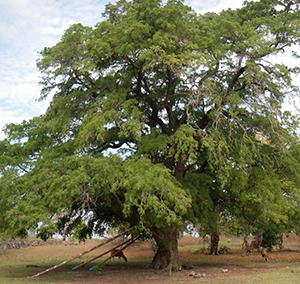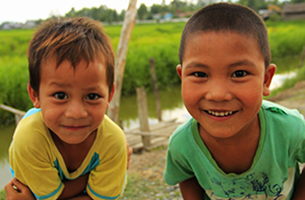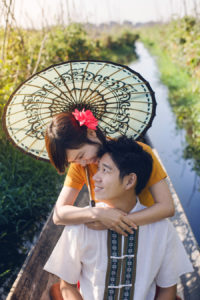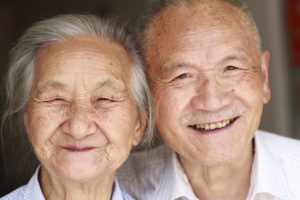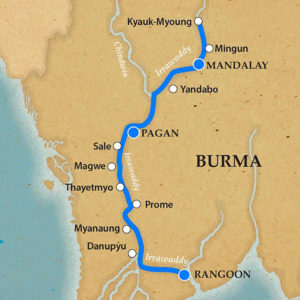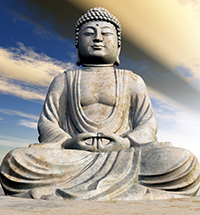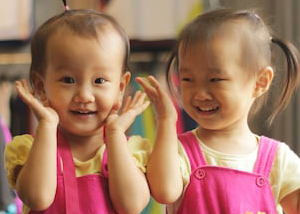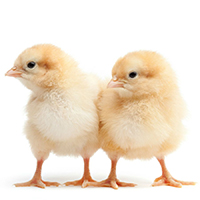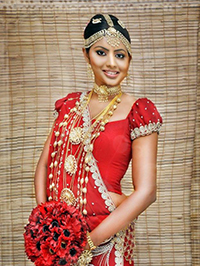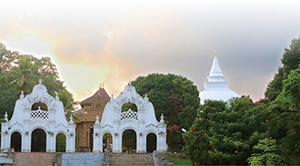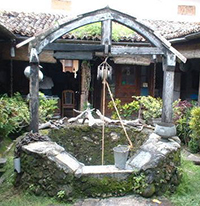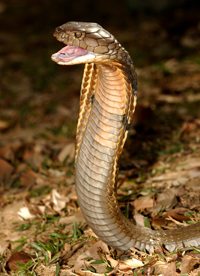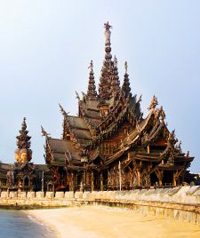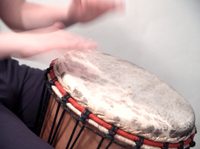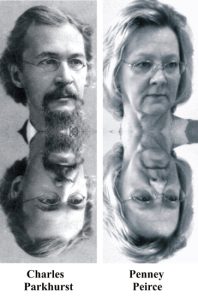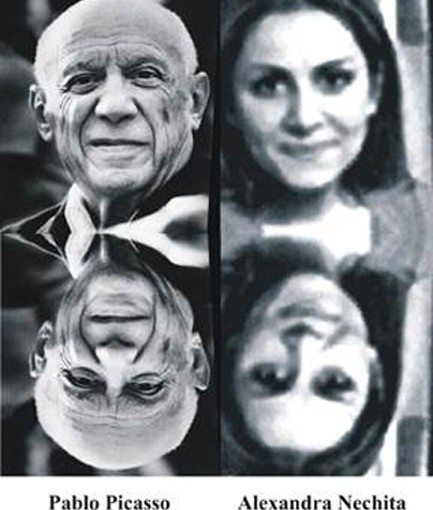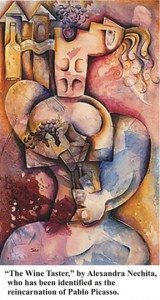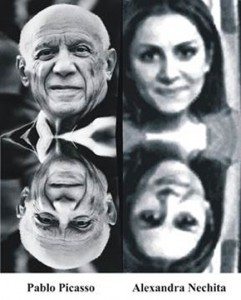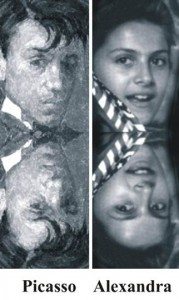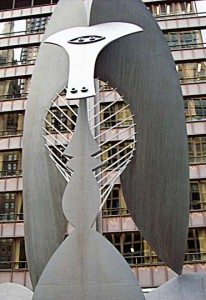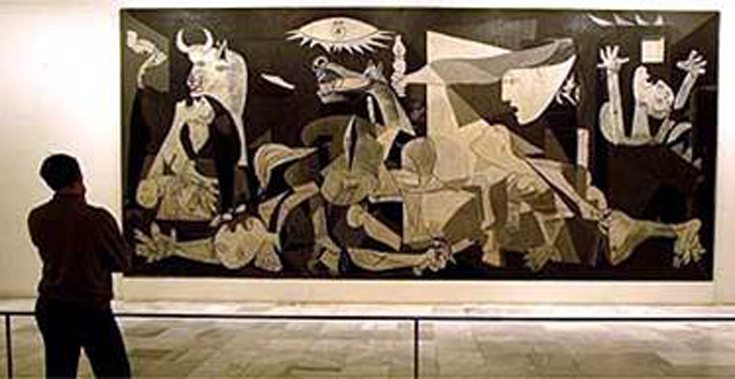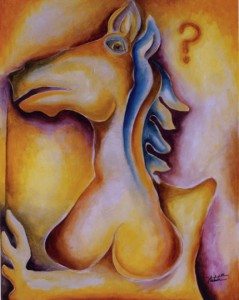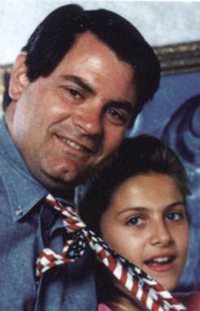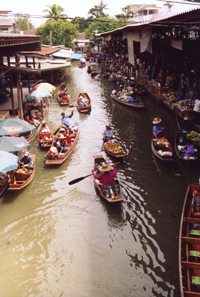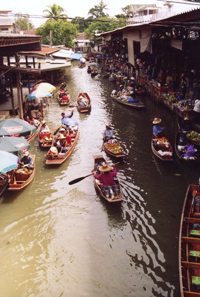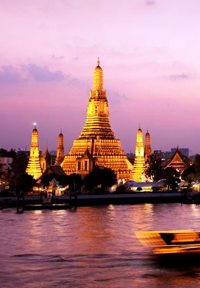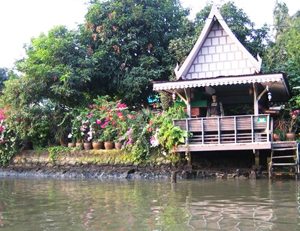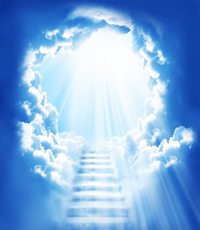How Derived: Past Life Memories in Childhood
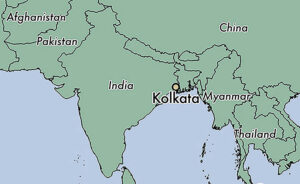 Researchers: Ian Stevenson, MD and Professor P. Pal
Researchers: Ian Stevenson, MD and Professor P. Pal
From: Cases of the Reincarnation Type: Volume 1, India,by Ian Stevenson, MD, pages 281-311
Article by: Walter Semkiw, MD
Click on Images to Enlarge Them
The Life and Death of Nishith De
Nishith De, a boy, was born in 1940 in the city of Burdwan, which is located in the Indian state of West Bengal. The capital of West Bengal is Kolkata, identified in the map provided to the right.
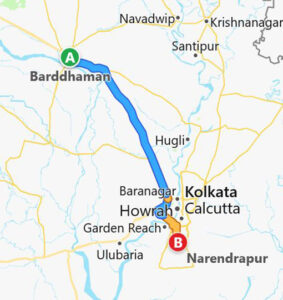 The city of Nishith’s birth, Burdwan, is now known as Barddhaman. In the map provided to the right, Barddhamar is marked by the symbol A and Kolkata is south of that point. The town of Narendrapur, which is part of this story, is south of Kolkata.
The city of Nishith’s birth, Burdwan, is now known as Barddhaman. In the map provided to the right, Barddhamar is marked by the symbol A and Kolkata is south of that point. The town of Narendrapur, which is part of this story, is south of Kolkata.
Nishith’s father, Anath De, was very rich. His mother’s name was Baudi. He he had a younger brother, named Sisil, and a younger sister.
Due to their wealth, the family chose not to associate with those below their social class. The family socialized primarily with their closest relatives.
Nishith attended local schools and colleges. He played soccer and cricket. Nishith did not have the elitist personality of his father and made friends with people of all classes of society, the poor and the privileged.
Nishith Develops Head Pain, Paralysis and Dies in Kolkata
In the beginning of 1964, at the age of 24, while attending Raj College in Burdwan, Nishith developed pain at the back of his head, along with nausea, vomiting and fever. Local physicians were unable to diagnose his illness.
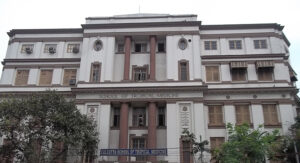 Nishith became worse after 6 months and his father arranged for him to be admitted to the Calcutta Tropical School of Medicine. Calcutta is now known as Kolkata, which is 105 kilometers or 63 miles from Burdwan.
Nishith became worse after 6 months and his father arranged for him to be admitted to the Calcutta Tropical School of Medicine. Calcutta is now known as Kolkata, which is 105 kilometers or 63 miles from Burdwan.
In the hospital Nishith developed paralysis and the inability to speak. He later fell into a coma, then died on July 25, 1964 at 24 years of age. An autopsy was not done and Nishith’s body was cremated. His physicians, though, thought Nishith had died of an abscess or a localized infection of the brain.
Nishith Reincarnates as a Girl in Kolkata, the Place Where He Had Died
Dolon Mitra, a girl, was born in Kolkata on August 8, 1967, about 3 years after Nishith had died. Her father was Audaryamoy Mitra and her mother was named Kanika. She had a brother who was 4 years older than her.
After Dolon was born, the family moved 10 kilometers or about 6 miles south of Kolkata to the town of Narendrapur, which is identifed on the map provided above. Dolon started to speak between 1 and 2 years of age.
Though a Girl, Dolan Likes to Wear Boys’ Clothing and States She was a Boy Before and Had Pain in the Head
Dolan had a penchant to wear the clothes of her older brother, which were much too big for her. When she was about 3 and a half years old, her mother scolded her for this behavior. Dolan then rebuked her mother, saying:
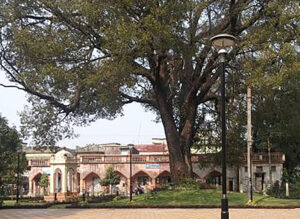 “I was a little bigger boy in a house like the palace.”
“I was a little bigger boy in a house like the palace.”
Her mother asked what she meant by that. Dolan responded:
“Yes, Mother, I am speaking the truth. I had a younger brother and sister. I had a fat aunt and my mother was named Baudi. Take me near the Maharajah’s palace and I shall lead you to the house.”
A Maharajah in India refers to a king or ruler. The Maharaja’s palace in Burdwan is featured in the photo to the right.
For no apparent reason, Dolan then bent her neck backwards and gazed at the ceiling of the room. Her mother asked why she was making this posture. Dolan replied that when she had been in the hospital in her past life, she had pain in the back of her head and held her head in the same position.
Additional Statements Made by Dolan Regarding Her Past Life
The rebuke her mother made about wearing boy’s clothes caused Dolan to make numerous additional statements regarding her past lifetime.
Dolan said lived she had lived a house in Burdwan. She said her father was stout and of fair complexion, though Dolan’s own father was slim and had dark skin. She said that in her past lifetime, her grandfather lived with them and repeated that she had a fat aunt. The statements made by Dolan were true for the life of Nishith.
Dolan said that her past life mother wore better dresses and put on much jewelry, which was true for the mother of Nishith. In contrast, Dolan’s mother dressed plainly without ornaments.
 Dolan said her past life house was near the Maharaja’s palace. This was true for Nishith, as his family’s home was less than 300 meters or yards from the Maharaja’s residence in Burdwan.
Dolan said her past life house was near the Maharaja’s palace. This was true for Nishith, as his family’s home was less than 300 meters or yards from the Maharaja’s residence in Burdwan.
Dolan said that her previous home was like a palace, very large and elegant, with floors made of marble or mosaics. It also had a separate shrine room, which was across the street from a teahouse. These statements were true for the home of Nishith.
She said that there were deer and peacocks at the house. It turned out that the De family had peacocks, but they did not have deer. At the park of the Maharaja’s property in Burdwan, though, there were deer and peacocks. Ian Stevenson speculated that Dolan may have confused memories of her past life home and that of the Maharaja. Dolan’s family, in contrast, had neither peacocks or deer.
Dolan said that her past life house had 2 stories and that her room had been on the first floor, just above the street or lane, near where stairs led to the house. She said that in the house there were shiny brass buckets, as well as many books, and that her father bought her many clothes. She also said that her father had “heaps of money.” These statements were true for the life of Nishith.
Dolan said she had studied at the Raj College, pictured to the right, and that she played soccer and cricket there. Dolan said she had been injured playing soccer and afterwards had pain in her leg. These statements were true for Nishith, including a knee injury incurred by Nishith while playing soccer, which led to chronic knee pain.
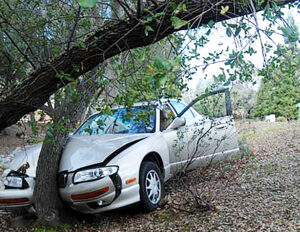 Dolan said she had a blue striped shirt that was her favorite piece of clothing and that: “There is a almirah in my room, where is a blue striped shirt and pants in it. Give these to me!” An almirah means a cabinet with drawers or shelves. Later it was verified that Nishith had a favorite blue striped shirt.
Dolan said she had a blue striped shirt that was her favorite piece of clothing and that: “There is a almirah in my room, where is a blue striped shirt and pants in it. Give these to me!” An almirah means a cabinet with drawers or shelves. Later it was verified that Nishith had a favorite blue striped shirt.
Dolan described an incident in which a car was going to a wedding, struck another car and broke down. An auto accident did occur in 1960, 4 years before Nishith had died. Anath De, Nishith’s father, was driving the car with family members to a wedding reception. The car struck a tree, not another auto, which resulted in fatalities. One of those killed was Anath’s brother, the paternal uncle of Nishith. Nishith, who was not in the car, later visited survivors of the accident in the hospital and cried due the loss of his uncle.
Dolan related that in her past lifetime, she had pain at the back of her neck and head, which resulted in her being taken to a hospital. She said that she had been there for a long time. Dolan said she had fallen from a bed in the hospital and had later died there.
 Nishith indeed had been hospitalized in Kolkata for head and neck pain, had fallen from his bed and was unable to get up from the floor. He then went into a coma for 15 days before he died.
Nishith indeed had been hospitalized in Kolkata for head and neck pain, had fallen from his bed and was unable to get up from the floor. He then went into a coma for 15 days before he died.
In sum, hospital records from the Calcutta Tropical School of Medicine showed that Nishith was admitted on July 4, 1964 and then died there on July 25, 1964.
Nishith, from the Spirit World, Watches His Body Taken from the Hospital to a Cremation Site: Dolan’s Past Life Memory
Dolan said that she had then been carried from the hospital by friends and relatives for cremation. Indeed, relatives had carried Nishith’s body out of the hospital to a truck, which transported his body to a cremation site. Note that this statement made by Dolan indicates that the soul of Nishith | Dolan was able to observe from the spirit world events after Nishith had died.
Dolan Insists that She Be Taken to Burdwan
 Dolan repeatedly asked to be taken to Burdwan. Dolan also proclaimed that she could find her past life home if she was brought to the Maharaja’s palace in Burdwan.
Dolan repeatedly asked to be taken to Burdwan. Dolan also proclaimed that she could find her past life home if she was brought to the Maharaja’s palace in Burdwan.
To satisfy her incessant requests, Dolan’s parents took her to Burdwan in October 1971, when she was about 4 years old. Narendrapur, the town where the family lived, is 72 miles from Burdwan. On this excursion, though, Dolan could not find her past life home, which made her very unhappy.
After returning home, Dolan continued to insist that her parents take her to Burdwan. Her parents eventually complied and took her there again on March 30, 1972, about 4 or 5 months after their initial visit.
Dolan’s Mother Enlists Help from Pritima to Find Her Past Life Family
To prepare for this second trip, Dolan’s parents contacted family  acquaintances who lived in Burdwan. These relatives were Nilachal Samanta and his wife, Pritima. Dolan’s parents asked the Samantas if they knew of a boy who had lived in a house like a palace who had died.
acquaintances who lived in Burdwan. These relatives were Nilachal Samanta and his wife, Pritima. Dolan’s parents asked the Samantas if they knew of a boy who had lived in a house like a palace who had died.
The couple had not heard of such a boy, but they made inquiries in the community and learned that the past life personality described by Dolan may have been a son of a family named De, who were wealthy and prominent citizens of the city.
With this information, Dolan and her mother Kanika traveled from Narendrapur to the Burdwan, identified as Barddahman on the map featured on the right, for their second visit at the end of March 1972. Dolan’s father did not go on this trip as he didn’t believe that his daughter would find her reported past life home. He thought the journey would be a waste of time.
Dolan and her mother met Pratima in Burdwan and then went to the home of Prithwis De, assuming this person was of the family that Dolan had been referring to. Fortunately, after hearing their story. Prithwis and his wife, Mira, were receptive to the possibility that Dolan was referring to a deceased relative of theirs, Nishith De.
Dolan Spontanously Finds Her Past Life Home
The group decided to see if Dolan could find her reported past life home. Mira led Dolan and her mother to a temple not far from the Maharaja’s palace in Burdwan. They then released her to go ahead to see if she could find the past life home that she had described.
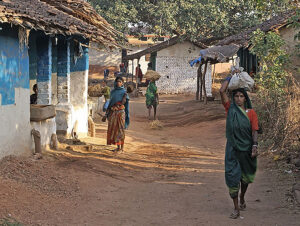 This time, Dolan succeeded in her quest by taking a winding series of streets that eventually led to a narrow lane. She followed this lane until she came to a small public shrine and teahouse on the other side of the path, which she seemed to recognize. She then pointed to a nearby house on the lane and communicated that this was her past life home. It turned out to be the house of Anath De, the father of Nishith De.
This time, Dolan succeeded in her quest by taking a winding series of streets that eventually led to a narrow lane. She followed this lane until she came to a small public shrine and teahouse on the other side of the path, which she seemed to recognize. She then pointed to a nearby house on the lane and communicated that this was her past life home. It turned out to be the house of Anath De, the father of Nishith De.
The party knocked on the door of this dwelling and Dolan, her mother, Kanika and Mitra were let in. Anath De, the man of the home, was not there at the time, but his son was, as well numerous women of the household.
Dolan Identifies Her Past Life Mother and Past Life Photo
One of these women was Nishith’s mother, Baudi, who was sitting in the living room of the house with about a dozen women of similar age Dolan’s mother asked her to point out her mother from the previous life. Dolan gazed at Baudi for some time and then said, pointing at her: “This is my mother.”
During this visit, Dolan recognized Nishith’s bedroom. She said: “This is my room.” She also found a photograph of Nishath and said: “Here am I.”
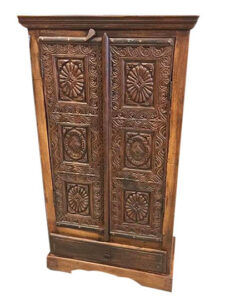 Dolan Finds Her Favorite Past Life Shirt, Keys and a Photo of Her Past Life Father
Dolan Finds Her Favorite Past Life Shirt, Keys and a Photo of Her Past Life Father
Dolan recognized the wooden cabinet that contained her past life clothing. There was also a steel cabinet in the room which Dolan correctly rejected as hers. She stated that her clothes were contained in the upper shelf of the wooden almirah, which she pointed to. She then asked for the almirah to be opened and her favorite past life blue striped shirt was found on the upper shelf
Dolan also found a photograph in the wooden cabinet featuring a group of several stout, middle aged men eating a meal. Dolan was asked to point out her father. Dolan correctly identified Anath De as her past life parent.
There were a bunch of keys in the almirah and when Dolan saw them, she said: “These are the keys of the drawers of my reading room.” She then pointed to another room and said “This is my study. Who reads here now?” The room was indeed Nishith’s study and the keys she had recognized in the other room did indeed open drawers located in the study.
Dolan Identifies Her Past Life Grandmother, Aunt and Brother
Later, when Dolan was standing outside near the property’s teahouse, a swarm of people surrendered her, as neighbors heard of the visit by this possible reincarnation of Nishith. One of these people was the paternal grandmother of Nishith. This person asked of Dolan: “Who am I?
Dolan correctly replied that this woman is my grandmother from the house I had lived in.
In addition, Nishith’s aunt Laxmi asked Dolan who she was. Dolan responded, the “aunt of the other house.” Indeed Laxmi, Nishith’s aunt, lived across the street from the larger De home.
Dolan was also confronted by Nishith’s younger brother, Sisil De. Sisil just stood before her, saying nothing. Dolan then spontaneously said: “He was my younger, not older brother,” which was correct, as Sisil was Nishith’s younger brother.
After all these recognitions and identifications, the family of De household understood Dolan was describing a past lifetime as Nishith De.
Dolan’s Reincarnation Case Draws the Attention of Ian Stevenson, MD of the University of Virginia

Dolan and his mother returned to Narendrapur and reported their experiences to Dolan’s father, who subsequently contacted he a Kolkata newspaper, which published an article on this reincarnation case on May 7, 1972.
In July 1972, Professor P. Pal, a colleague of Ian Stevenson, began investigating the case. Dr. Pal brought this reincarnation case to the attention of Stevenson, who traveled to India to interview Dolan’s parents in October and November 1972. In March 1973, Stevenson returned for further interviews of witnesses of this case, verifying the testimony provided above.
Stevenson also documented that Dolan’s family had never been to Burdwan before their first visit Dolan in October 1971 and that Dolan’s family had never known or heard about the De family before their second visit to Burdwan in March 1972.
Dolan’s Past Life Masculine Traits
As noted, though a girl, Dolan liked to dress herself and her older brother’s shirt and pants, despite these clothes being much too big for her. She also preferred to play boy’s games, rather than engage in activities typical for girls.
Of interest, Nishith’s mother, Baudi, upon meeting Dolan and witnessing her past life identifications, was upset that her son had been reborn as a girl. She was also anxious that Dolan and her kin may claim the wealth of the De family.
Principles of Reincarnation-Understanding Past Lives
 Change of Gender with Retention of Masculine Traits: Nishith was a male but reincarnated as a female. Though Dolan was a girl, she liked to dress as a boy and preferred male activities.
Change of Gender with Retention of Masculine Traits: Nishith was a male but reincarnated as a female. Though Dolan was a girl, she liked to dress as a boy and preferred male activities.
Geographic Memory: On her second visit to Burdwan, without directions, Dolan led her party though winding streets and lanes to her past life home. Ian Stevenson retraced this path during one of his visits and vouched that it would be extremely difficult to find the De house without prior knowledge of the area.
This phenomenon, of spontaneously finding a past life residence, was also observed in the:
Reincarnation Case of Anne Frank | Barbro Karlen
Relationships Renewed through Reincarnation: Dolan was reunited with her past life family.


